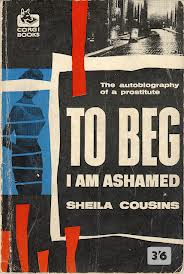Posted: July 5th, 2013 | 3 Comments »
I am hoping that Christine Leang can find an English language publisher for her new book as many of the people profiled have a wider appeal historically than just to the French – Roderick Egal, the leader of Shanghai’s Free French Resistance, for instance….so here’s hoping a bright publisher will pick up the translation rights for Embarquement pour la China…
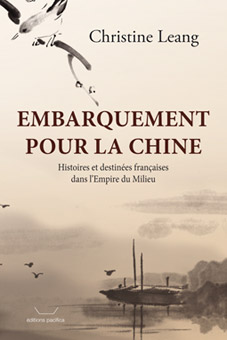
Monseigneur Favier, Auguste Boppe, le Consul Béchamp, Edith Mankiewicz, le Docteur Bussière, Roderick Egal, George Soulié de Morant… Des noms qui sont tombés dans l’oubli. Tous, pourtant, ont eu une histoire exceptionnelle. Ils ont foulé de leurs pieds la terre de Chine, à une époque où celle-ci n’était accessible qu’après des mois d’une longue traversée en bateau. Certains de ces personnages se sont même croisés ; d’autres ont fait face à leurs homologues locaux, parfois des hôtes, parfois des ennemis. De ce passage en Chine, tous en ont vu leur destin profondément transformés.
Des premiers missionnaires jésuites aux derniers diplomates, en passant par ces hommes qui ont bâti les concessions françaises, et ceux et celles qui sont allés chercher l’exil dans cette contrée lointaine, Embarquement pour la Chine nous invite à un voyage au cÅ“ur de l’Empire du Milieu, à travers les histoires et les destinées de ces Français qui ont découvert la Chine entre les années 1740 et 1950.
_________________
Juillet 1980. Issue de la diaspora chinoise au Cambodge fuyant le régime khmer rouge, Christine Leang naît dans un camp de réfugiés à la frontière thaïlandaise. Dès lors, c’est toute sa vie qui sera empreinte de destinées historiques. Février 2005. Christine Leang quitte Paris, où sa famille et elle ont trouvé refuge, et vient s’installer seule à Shanghai, étape incontournable de sa quête sur ses origines. En découvrant l’expérience des Français qui vécurent en Chine aux siècles précédents, elle fait un tout autre voyage, qui lui apporte un nouvel éclairage sur ses propres interrogations.
Posted: July 2nd, 2013 | No Comments »
Still talking Ann Bridge…As we’ve had some Peking Picnic covers time to slip in a few variations of The Ginger Griffin too…As the blurbs say: “This was Ann Bridge’s second novel, published in 1934. It combines romance and adventure and is set in the days when expatriates and diplomats enjoyed privileged and cosseted lives in the Far East.”




Posted: July 1st, 2013 | No Comments »
Talking of Ann Bridge’s 1932 Peking Picnic in yesterdays post (which is actually about 1920s Peking life), it is a book that has had a lot of covers over its long life as a China classic….
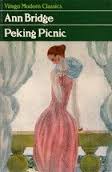
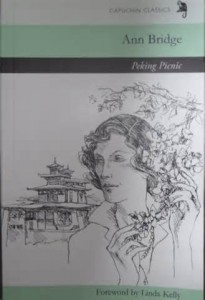
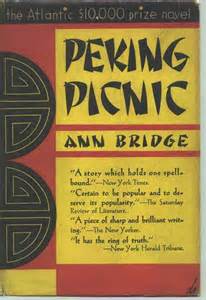


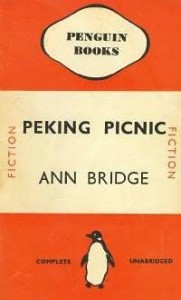
Posted: June 30th, 2013 | No Comments »
Old China Hands will be more than familiar with the work of Ann Bridge (formerly Lady Mary Ann Dolling Sanders O’Malley). In 1913 Bridge married Owen St. Clair O’Malley, a British diplomat who was posted to Peking in 1925 for a couple of years. Out of this came Bridge’s classic novels of Peking ex-pat life, Peking Picnic and The Ginger Griffin (which if you haven’t read them you really should). Bridge moved around eastern Europe and later to Portugal. Knowing her China novels well I recently decided to try and read Julia Probyn novels, written later in the 1950s through to her death in 1973. Julia is a well-heeled spy and they are, so far, quite good fun (there’s eight of them in total).
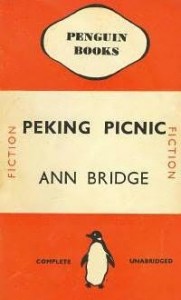
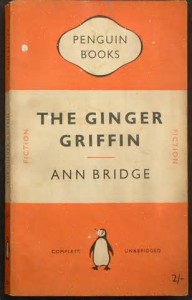
One interesting thing about Bridge’s novels is that China remains a point of reference for her, if not a setting. They also show that that generation that had known China between the wars did regularly reference it when confronted with contemporary events. In the first Julia Probyn novel, A Lighthearted Quest (alternatively sometimes The Lighthearted Quest) our heroine travels briefly to Casablanca sometime a few years after the war. Casablanca is, she is informed by a local banker, going through a real estate boom – she is told, “land values in this place keep soaring like in Shanghai in the old days’.
When in the post-war period people looked around for a massive property boom to compare to they thought instantly of Shanghai in the inter-war period when property prices did indeed boom incredibly. Of course some would say that a few years hence from now we may well be using the same comparison, only to a later Shanghai property boom and resultant crash!!
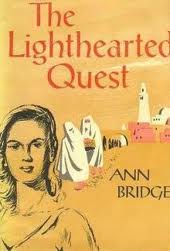
Posted: June 29th, 2013 | No Comments »
After watching the BBC drama the other night Wodehouse in Exile (about PG Wodehouse’s problems in occupied France and his contentious broadcasts for the Germans – Orwell, rightly dubbed him more idiot than traitor) I thought perhaps another post on Wodehouse and China was in order. I posted before about Wodehouse’s China links (and his satirical novel Clarence which see a Chinese army invade Wales) – his dad was a judge in Hong Kong before he was born and Wodehouse himself first worked for the Hong Kong and Shanghai Bank (HSBC) and was slated for a Far East posting had his literary career not taken of. This time it might be worth mentioning that Wodehouse did feel drawn occasionally to romantic notions of China – he grew up in a house stuffed with Chinese curios and momentoes of his parents years in Hong Kong – and The Rose of China was one such outpouring.
Around 1919 Wodehouse was in America (his wife was of that extraction) supposedly relaxing but he was persuaded to start working with Guy Bolton on a musical based on Samuel Shipman’s play East is West. This became The Rose of China and they roped in the conductor of the Ritz Hotel’s orchestra Armand Vecsey to provide the score. Wodehouse himself provided the lyrics for at least two songs in the show – Broken Blossoms and Bunny Dear. The show premiered on Broadway in 1920 with Bolton being credited with the book, Vecsey with the music and Wodehouse with the lyrics. It was, unfortunately, a failure and lasted only 47 performances before the three act musical set in “The garden of Tsao Ling, Tommy Tilford’s bungalow and the Terrace outside the bungalow” was darkened forever. Still, a certain couple of characters called Bertie Wooster and his valet Jeeves rather took of and Wodehouse could forget his China failure.
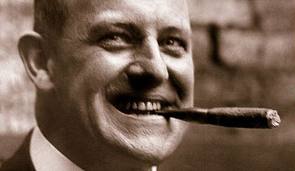
Posted: June 28th, 2013 | No Comments »
The Chinese language edition of Midnight in Peking is now in the shops and online in China for the stunningly low price of just RMB35 (actually priced at the high end of the China book market!). My translator was a very cool guy who really diligently worked to try and keep the style and sense of place. It’s going to be interesting to see what Chinese readers think…and below the details for my Chinese readers from Beijing Youth…

英国历å²å¦å®¶è¿˜åŽŸè€åŒ—平悬疑罪案Â
è£èŽ·2013“爱伦•å¡å¥–最佳犯罪实录奖â€
这一切居然是真的!
Â
“帕梅拉•沃纳的尸体现在就躺在北京的二环路下,那里曾ç»æ˜¯è‹±å›½å…¬å¢“。在过去的70多年里,她就一如她生å‰ä¸€æ ·â€”—å¤å•åœ°å¾…在那里。
ç‹ç‹¸å¡”至今ä»ä¿¯çž°ç€ç›”甲厂胡åŒï¼Œä¿¯çž°ç€æ›¾ç»ä¸€åº¦æ··æ‚ä¸å ªçš„北平黑市。它俯瞰ç€éž‘é¼åŸŽå¢™ï¼Œä¿¯çž°ç€1937年那个寒冷的早上帕梅拉尸体被å‘现的地方。现在,åªæœ‰ä¸Šäº†å¹´çºªçš„è€åŒ—京还记得ç‹ç‹¸å¡”,而ç‹ç‹¸ç²¾ä¹Ÿåªä¼šå‡ºçŽ°åœ¨è€äººå®¶çš„故事里。还有è°è®°å¾—有外国姑娘在城墙下被分尸的悲惨命è¿å‘¢ï¼Ÿâ€
Â
《åˆå¤œåŒ—平》(MIDNIGHT IN PEKING)是一本献给帕梅拉的书。
1937å¹´1月,日本全é¢ä¾µåŽå‰å¤•ï¼Œå¹´è½»çš„英ç±å°‘女——英国外交官19å²çš„女儿帕梅拉在北平被谋æ€ï¼Œæ®‹å¿è‡³æžçš„凶æ€çŽ°åœºéœ‡æƒŠäº†æ•´ä¸ªåŒ—平。ä¸è‹±è¦æ–¹éšå³å±•å¼€è°ƒæŸ¥ï¼Œä½†å› éšåŽæˆ˜ä¹±å»¶ç»µå’ŒåŒæ–¹å½“å±€çš„é˜»æŒ ï¼Œæ¡ˆä»¶çš„ä¾¦ç ´ä¸æ–被æ置,最åŽç«Ÿä¸äº†äº†ä¹‹ï¼Œå‡¶æ‰‹é€é¥æ³•å¤–,直到如今。
â€œæˆ‘ç¬¬ä¸€æ¬¡è¯»åˆ°å¸•æ¢…æ‹‰â€¢æ²ƒçº³çš„æ•…äº‹æ˜¯åœ¨ç¾Žå›½è®°è€…åŸƒå¾·åŠ â€¢æ–¯è¯ºçš„ä¼ è®°é‡Œã€‚è¿™ä½è®°è€…的畅销著作《红星照耀ä¸å›½ã€‹åœ¨ä¸Šä¸–纪30年代将毛泽东推å‘了全世界。当时有一æ¡è„šæ³¨è¯´åŸƒå¾·åŠ 的妻å海伦在帕梅拉é到分解的尸体被å‘现åŽå¾ˆæ˜¯ç´§å¼ ã€‚å› ä¸ºä»–ä»¬å®¶ç¦»æ¡ˆå‘地点很近,而且海伦••••••ç¦æ–¯ç‰¹â€¢æ–¯è¯ºä¹Ÿç»å¸¸æ™šä¸Šéª‘车回家。这æ¡è„šæ³¨è¿˜æ到了ç‹ç‹¸ç²¾â€˜æƒ…欲é…惑’的说法,还有帕梅拉的父亲作为英国å‰å¤–交官的身份以åŠæ¡ˆå最åŽä¸€ç›´æœªèƒ½æŸ¥æ˜Žå‡¶æ‰‹çš„结果。â€
75å¹´åŽï¼Œè‹±å›½äººä¿ç½—•法兰奇对这个å¶ç„¶é‚‚é€…çš„æ•…äº‹æ— æ³•å¿˜æ€€ã€‚â€œå¯¹æˆ‘æ¥è¯´ï¼Œæ˜¯åœ¨ä¸€ä¸ªå¯’冷的冬日,在英国图书馆的报纸å˜æ¡£é‡Œæ„å¤–çœ‹åˆ°ä¸€å¼ å¸•æ¢…æ‹‰çš„ç…§ç‰‡æ—¶æ‰ç»ˆäºŽå†³å®šä¸€å®šè¦æŠŠè¿™ä¸ªæ•…事讲出æ¥ã€‚â€
ä¿ç½—•法兰奇出生于伦敦,1986年到å¤æ—¦å¤§å¦å¦ä¹ 一年ä¸æ–‡åŽï¼Œåœ¨ä¸å›½ç”Ÿæ´»äº†äºŒå年。他是ä¸å›½é—®é¢˜åˆ†æžå¸ˆå’Œè¯„论家,著有《镜里看ä¸å›½ï¼šä»Žé¸¦ç‰‡æˆ˜äº‰åˆ°æ¯›æ³½ä¸œæ—¶ä»£çš„é©»åŽå¤–国记者》ã€ã€Šå¡å°”•克劳——神奇的ä¸å›½é€šï¼šä¸€ä½ç¾Žå›½äººåœ¨ä¸Šæµ·çš„生活和冒险》ã€ã€ŠåŒ—韩:å执的åŠå²›çš„现代å²ã€‹ã€Šæ—§ä¸Šæµ·çš„A到Z》。
他开始为之辗转ä¸å¤–,翻阅所有案å·ï¼Œèµ°è®¿æ¡ˆå‘地点和相关人员。“一桩让当时北平ä¸å¤–社区都谣言四起议论纷纷的案å,在这座已ç»è¢«æ—¥å†›åŒ…å›´ã€å²Œå²Œå¯å±çš„城市里投下了巨大的ææ…Œï¼Œå¸•æ¢…æ‹‰æ¡ˆå¯¹æ— æ•°äººæ¥è¯´æ˜¯ä¸ªé¢„兆,预示ç€ä¸€åº§é¢ä¸´ç顶之ç¾çš„城市ä¸å³å°†çˆ†å‘çš„ç‹‚èºã€‚â€æœ€ç»ˆï¼Œä¼´éšç€éª‡äººç½ªæ¡ˆè¢«æ密的,还有一个业已消失的å¤åŸŽã€ä¸€ä¸ªç»ˆç»“的时代——颓废的北平ã€å†·é…·çš„洋人ã€å¤è€çš„城墙ã€è¢«æ·¡å¿˜çš„地åã€ä¸œéƒŠæ°‘巷领馆区……
“从头到尾我都觉得帕梅拉••沃纳ä¸åº”被人忘记,而且ä¸ç®¡å¤šæ™šï¼Œéƒ½ä¸€å®šè¦è¿˜å¥¹ä¸€ä¸ªå…¬å¹³ã€‚â€åœ¨ä¿ç½—•法兰奇看æ¥ï¼Œâ€œè¿™ä¸€åˆ‡å±…然都是真的!â€æ˜¯è¿™ä¸ªæ‚²å‰§æœ€éª‡äººçš„力é‡å’Œæœ€ç»ˆæžçš„æ„义所在。
2013å¹´3月《åˆå¤œåŒ—平》出版。4月,ä¿ç½—â€¢æ³•å…°å¥‡å› ä¸ºå®ƒè¢«ç¾Žå›½ä¾¦æŽ¢ä½œå®¶å会(WMAï¼‰æŽˆäºˆâ€œåŸƒå¾·åŠ â€¢çˆ±ä¼¦â€¢å¡æœ€ä½³çŠ¯ç½ªå®žå½•å¥–â€ã€‚
创立于1946年该奖,系以美国å‰æ€»ç»Ÿæž—肯和著å音ä¹å®¶è§ä¼¯çº³æœ€ä¸ºæ¿€èµçš„世界侦探å°è¯´å¼€å±±é¼»ç¥–åŸƒå¾·åŠ â€¢çˆ±ä¼¦â€¢å¡ï¼ˆEdgar Allen Poe)的åå—命å。自创设以æ¥ï¼Œå¤‡å—推崇。全世界的侦探å°è¯´ä½œå®¶èŽ«ä¸ä»¥èŽ·å¾—æ¤å¥–为è£ã€‚该奖亦被誉“世界侦探å°è¯´é¢†åŸŸçš„奥斯å¡å¥–â€ï¼Œå‡ 乎所有è£èŽ·æœ€ä½³å°è¯´å¥–的作å“,最åŽéƒ½è¢«æˆåŠŸæ”¹ç¼–æˆç”µå½±æˆ–电视剧集,尽享赞誉。
æ®æ‚‰ï¼Œã€Šåˆå¤œåŒ—平》的电视改编æƒå·²è¢«è‹±å›½Kudos Film and Televisionå…¬å¸è´ä¸‹ï¼Œç›¸å…³å‰§é›†å°†äºŽ9月在ä¸å›½å¼€æ‹ã€‚å…¶ä¸å¸•æ¢…拉的父亲,å‰è‹±å›½å¤–交官ã€è‘—å汉å¦å®¶çˆ±å¾·åŽâ€¢æ²ƒçº³ä¸€è§’,已确定将由《哈利•波特》ä¸é‚“ä¸åˆ©å¤šæ ¡é•¿çš„饰演者出演,而其ä¸æœ€ä¸»è¦çš„ä¸å›½äººè§’色,北平公安局东å—分局侦探队韩世清队长,则署æ„香港演员黄秋生。
                     文/本报记者å´è²
Posted: June 27th, 2013 | No Comments »
Tom Ford has several new scents out using China and the Orient as a motif – Fleur de Chine and Shanghai Lily (the prostitute in Shanghai Express, or perhaps a brand of Chinese cervical cap, but who’s caring?), both in the Atelier d’Orient collection.
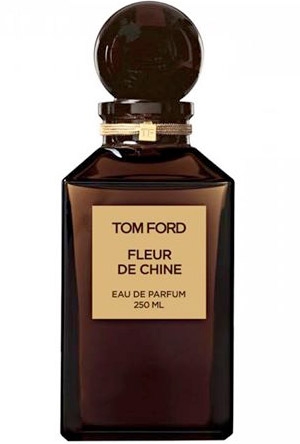
 Fleur de Chine ~ “Dramatic. Smouldering. Seductive. Tom Ford’s Fleur de chine eau de parfum is an unequivocally romantic and haunting floral fragrance touched with a reverence for the great scents of the past. Precious asian flowers, including hualan flower and star magnolia, are arranged in a bouquet of rare beauty for a scent that lingers on.â€
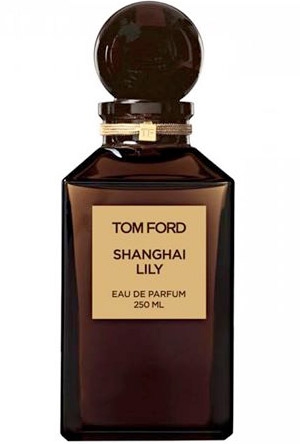
Shanghai Lily ~ “Opulent. Tantalising. Elegant. Tom Ford’s Shanghai Lily eau de parfum is a floral oriental scent that transports the senses into a world of rare and opulent ingredients from the historic silk road. Warm spices, elegant florals and addictive notes of vanilla and frankincense create a hazy reverie of glamour and temptation.â€
And the real Shanghai Lily (we never miss a chance for a Dietrich pic here!)…

Posted: June 26th, 2013 | No Comments »
Regular readers will know that I like to find strange comparisons in literature where famous writers compare places in China to rather mundane locations elsewhere – there’s a ton them here with links from previously. Here’s a Singapore related one…
To Beg I am Ashamed was supposedly the memoir of a London prostitute by Sheila Cousins published in 1938 (though some say it was ghost written by Graham Greene). Towards the end of the book the central character is whisked of to Malaya by a client and notes of Singapore:
‘For Singapore, when you get to know it, is merely Hendon Central with the sea round’
eerrr, OK….this of course seems a bit silly now, but then in the 1930s perhaps not so much on reflection (climate aside obviously).
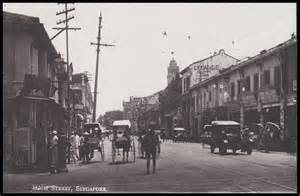 Singapore in the 1930s
Singapore in the 1930s
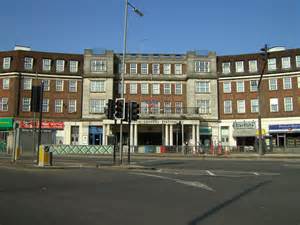
Hendon – not overly dismilar to a lot of the architecture Singapore had from the British around the that time…
